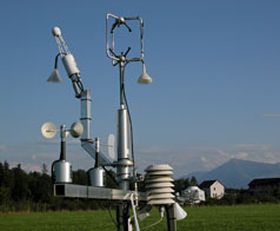Flux measurements of greenhouse gases using quantum cascade lasers

Flux data of atmospheric trace gases, like H2O, CO2, N2O and CH4, are extensively used to improve our understanding of the biosphere–atmosphere exchange processes and to estimate annual exchange rates on regional to global scale. Observations also serve to validate global climate models. In most cases, the sources and sinks of these compounds are diffuse, thus eddy covariance (EC) is the preferred method for quantification. The EC method is based on the analysis of high-frequency wind and scalar atmospheric data series and yields integrated trace gas flux values over extended areas – appropriate for landscape scale studies.
The EC technique relies on fast response, field-deployable and high-sensitivity instruments, which can rapidly resolve small (preferably better than 0.1%) concentration changes in the trace gases at ambient level.
Optical analysers based on laser absorption spectroscopy are currently the preferred tools to measure field-scale mixing ratios and fluxes. We have adapted, applied and compared various laser based instruments for EC measurements. An objective evaluation of the suitability and accuracy of the instruments for measuring methane fluxes by the EC method was achieved by developing and applying an artificial flux generation system, which mimics an amplified ecosystem-atmosphere gas exchange.
-
Share
